11 Telechron Clocks That Defined the Electric Age
Telechron clocks, introduced in 1925, were one of the earliest electric timepieces to revolutionize how we keep track of time. Their electric motors replaced traditional winding mechanisms, making them more convenient and reliable for daily use. These clocks quickly gained popularity due to their sleek design and dependability. Over the years, Telechron clocks became a symbol of the electric age, reflecting the growing influence of technology in people’s lives. Collectors today continue to search for these iconic clocks to add to their collections.
This post may contain affiliate links, which helps keep this content free. Please read our disclosure for more info.
Telechron 355 Cathedral
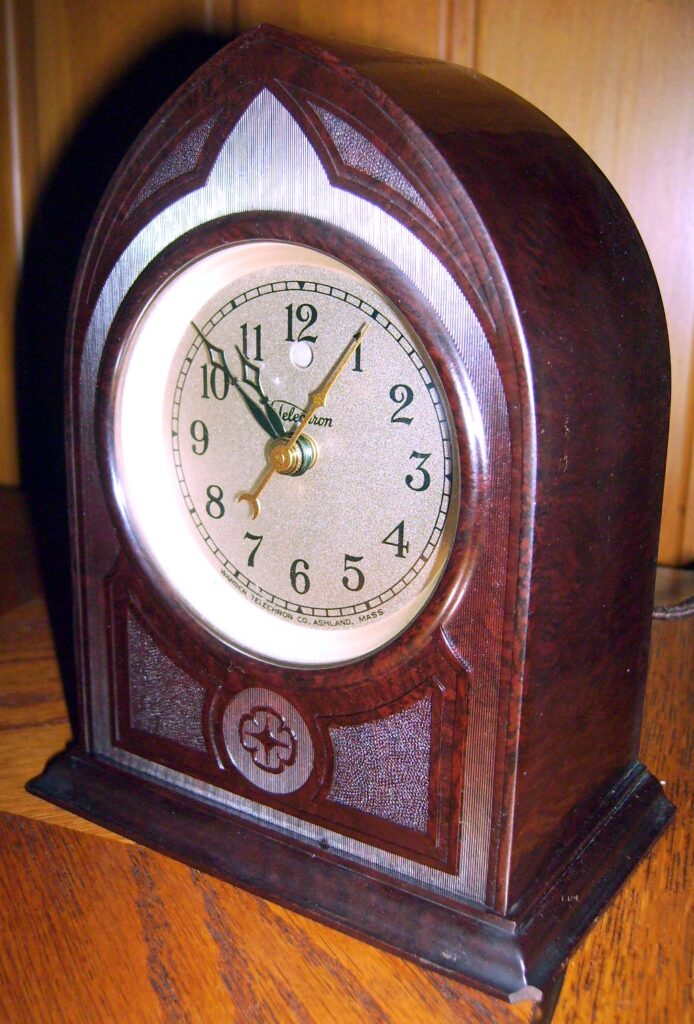
Released in 1927, the Telechron 355 Cathedral was one of the earliest electric clocks, marking a significant transition from mechanical to electric timekeeping. It featured a distinctive cathedral-style case, a design that was both functional and visually striking. These clocks used Telechron’s synchronous motors, which provided more accurate timekeeping compared to traditional mechanical clocks. The Cathedral was popular in households throughout the late 1920s and early 1930s, reflecting the growing use of electricity in homes. Today, well-preserved models can be valued between $200 and $300, depending on condition.
What makes the Cathedral rare is its limited production and the unique style that defines this early electric age. The combination of Art Deco design and modern electrical technology helped make this clock a household name. Many collectors appreciate its historical value as one of the first electric clocks available to the public. The Cathedral remains a prized piece for vintage clock collectors. Its beauty and functionality have made it a lasting symbol of early 20th-century electric design.
Telechron 2H07-Br Administrator
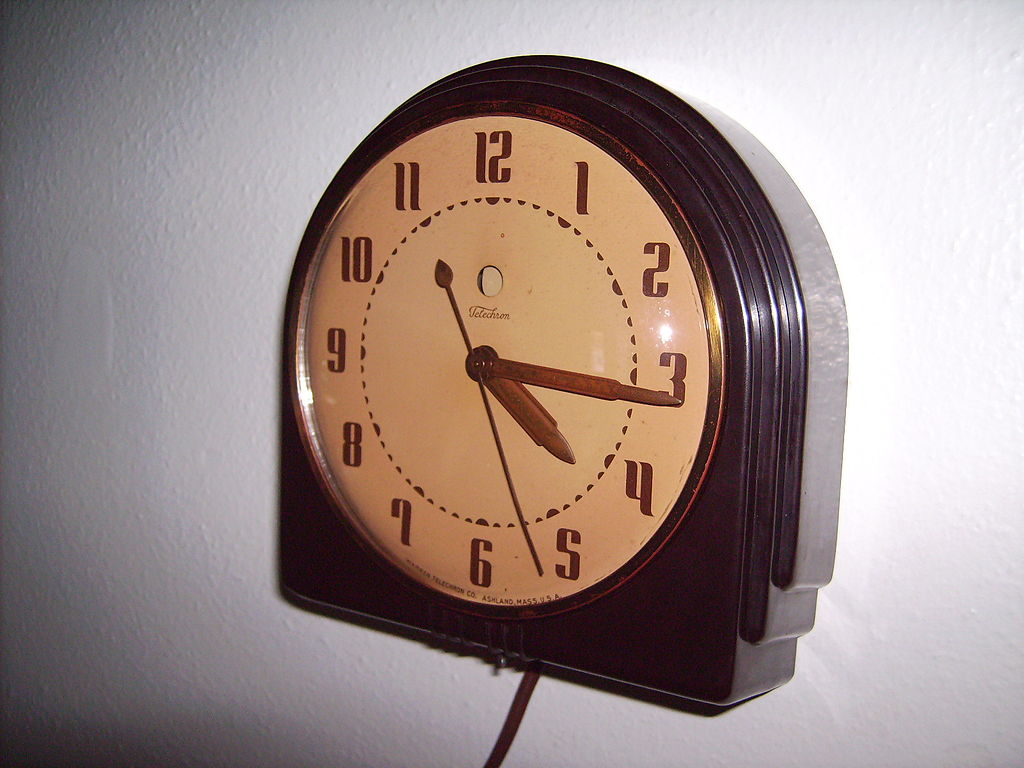
The Telechron 2H07-Br Administrator was introduced in 1937 and was designed to cater to a more modern aesthetic. It featured a sleek and streamlined look that aligned with the Art Deco style, which was prominent in the 1930s. The clock included a red dot indicator that signaled when the power supply was interrupted, reflecting the growing importance of reliable electric timekeeping. While it was mainly produced for homes and offices, it was notable for its precision and easy-to-read dial. In good condition, this clock can be worth between $150 and $250.
The Administrator became a popular choice among those looking for both a functional and stylish timepiece. Its innovative features set it apart from other clocks of the era, with the red dot being a particularly sought-after characteristic. The sleek design and reliable motor helped define Telechron’s place in the electric age. Collectors today value this model for its historical significance and clean aesthetic. Finding one in great condition is increasingly rare, making it a highly desirable item.
Telechron 7F72 Heralder
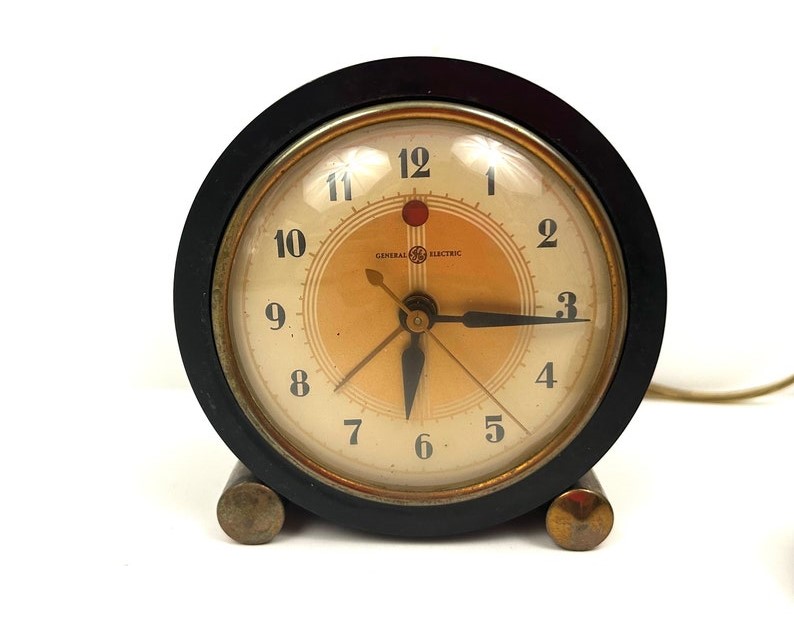
Released in the 1930s, the Telechron 7F72 Heralder is a compact alarm clock that stands out for its reliability and design. This clock was one of the first to feature a simple yet effective motor, providing accurate timekeeping with the convenience of not needing to be wound regularly. The Heralder was built using Bakelite, which was common in the era for its durability and ease of molding into different shapes. Although the Heralder wasn’t as famous as other models, it became a staple in many homes. Today, these clocks typically sell for $50 to $100, depending on their condition.
The Heralder is prized for its simplicity, making it one of the more practical Telechron clocks produced during the 1930s. Its easy-to-read face and dependable motor helped solidify its reputation as an essential household item. The clock’s use of Bakelite also gave it a distinctive, retro look that is appreciated by collectors today. Despite being relatively simple, it has become a collectible item due to its association with the rise of electric clocks. The Heralder represents an important piece of electric clock history.
Telechron 8B23 Register
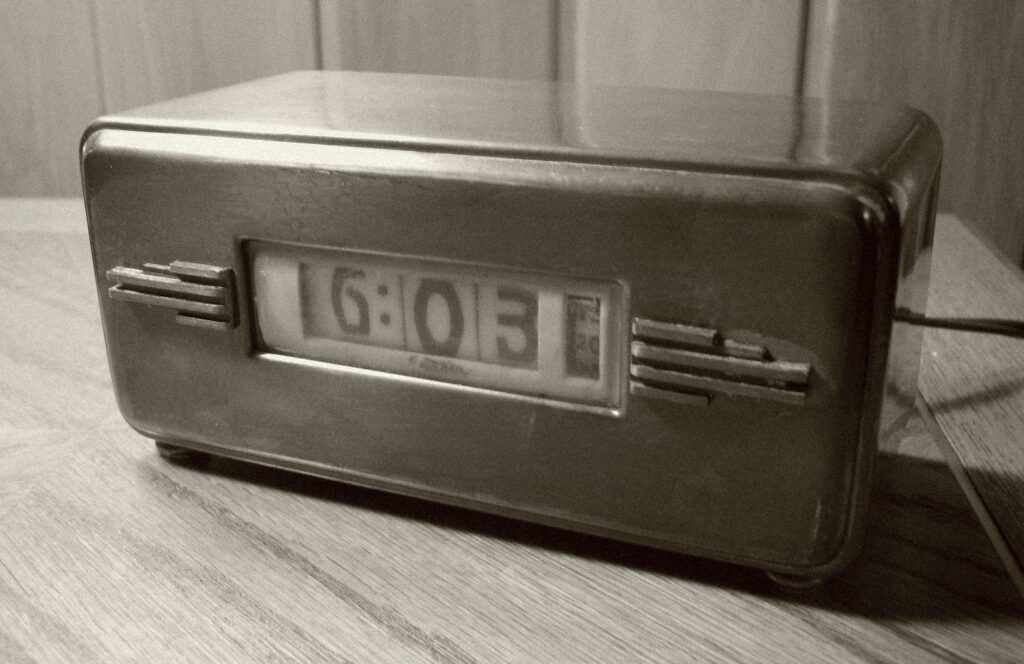
The Telechron 8B23 Register, introduced after World War II in 1946, was designed with a large, easily readable dial, ideal for commercial spaces like offices and schools. The clock’s large design helped to make it a functional yet visually appealing timepiece for the post-war era. It was powered by a Telechron synchronous motor, offering highly accurate timekeeping that was less common in mechanical clocks of the time. The Register was favored for its simplicity and precision, making it ideal for business environments. Prices for this model today typically range from $100 to $150.
As the demand for electric clocks increased in commercial settings, the Register became a popular choice for businesses looking for reliable timekeeping. Its simple yet practical design made it a favorite, reflecting the mid-century shift towards modern technologies. Today, collectors appreciate the Register for its historical value as part of the post-war electric revolution. While this model is not as rare as some others, finding one in good condition is still desirable. The Telechron Register remains an excellent example of mid-century clock design and function.
Telechron 7H141 Airlux
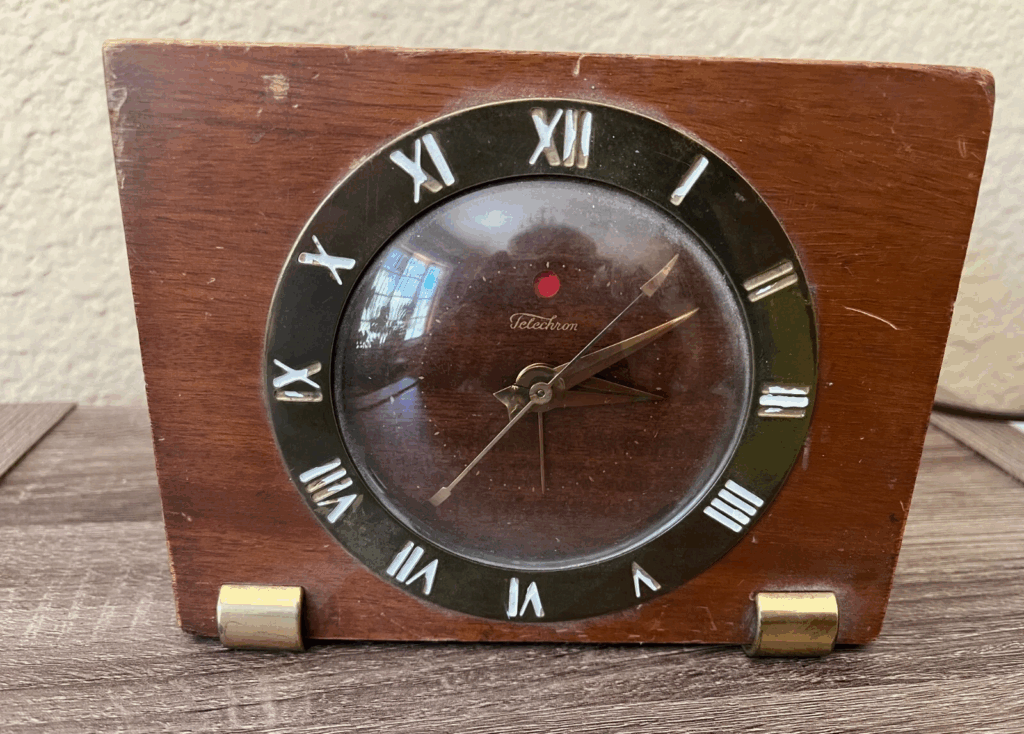
Released in 1946, the Telechron 7H141 Airlux was a wall clock introduced to fit into mid-century modern homes. This clock was known for its clean lines and minimalist design, making it a versatile piece in many interiors. The Airlux used the Telechron synchronous motor, offering precise timekeeping that was a significant improvement over earlier mechanical clocks. Its design made it a favorite among those who sought both functionality and elegance. Today, it is valued between $75 and $125 depending on condition.
With its simple and efficient design, the Airlux became an iconic piece in many homes during the mid-20th century. The clock’s popularity stemmed from its ability to seamlessly integrate into various interior styles, making it a favorite for those wanting both functionality and elegance. Collectors today appreciate the clock’s reliability and clean lines, which made it a symbol of 1940s design. Despite being one of the simpler models, the Airlux holds value for those interested in vintage electric clocks. As fewer well-maintained models remain, it continues to be a sought-after collectible.
Telechron 3F03 Esquire
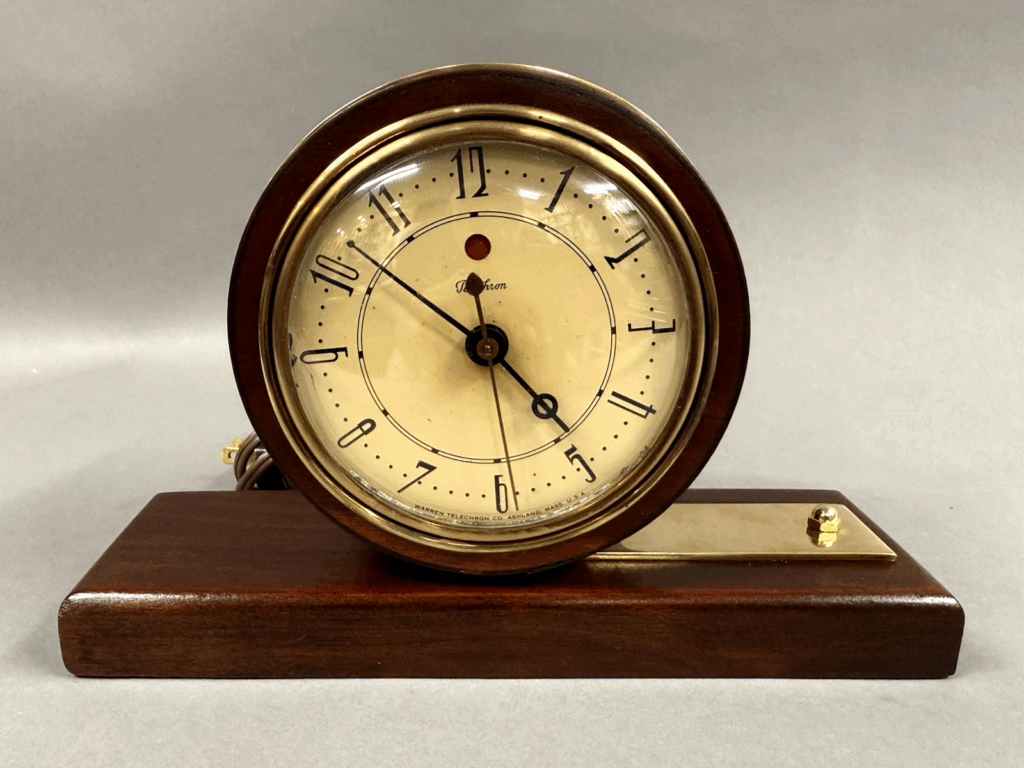
Released in the 1930s, the Telechron 3F03 Esquire was a desk clock that became a symbol of modern convenience and elegance. Its compact design and Art Deco influences made it a standout piece for office spaces and study areas. The clock utilized Telechron’s electric motor, which offered greater accuracy than mechanical wind-up clocks. The Esquire was valued for its practical design, offering easy readability and a reliable timekeeping function. Today, it typically sells for $75 to $125 depending on condition and rarity.
Collectors seek the Esquire due to its distinctive Art Deco styling and its place in the evolution of electric clocks. Its small size made it a popular choice for those looking to add an elegant touch to their desk or office. The clock’s historical significance, combined with its functional design, makes it a desirable piece for collectors today. The Esquire remains a fine example of how Telechron made electric timekeeping accessible and fashionable. Its collectible value continues to grow as interest in vintage electric clocks increases.
Telechron 2H17 Minitmaster
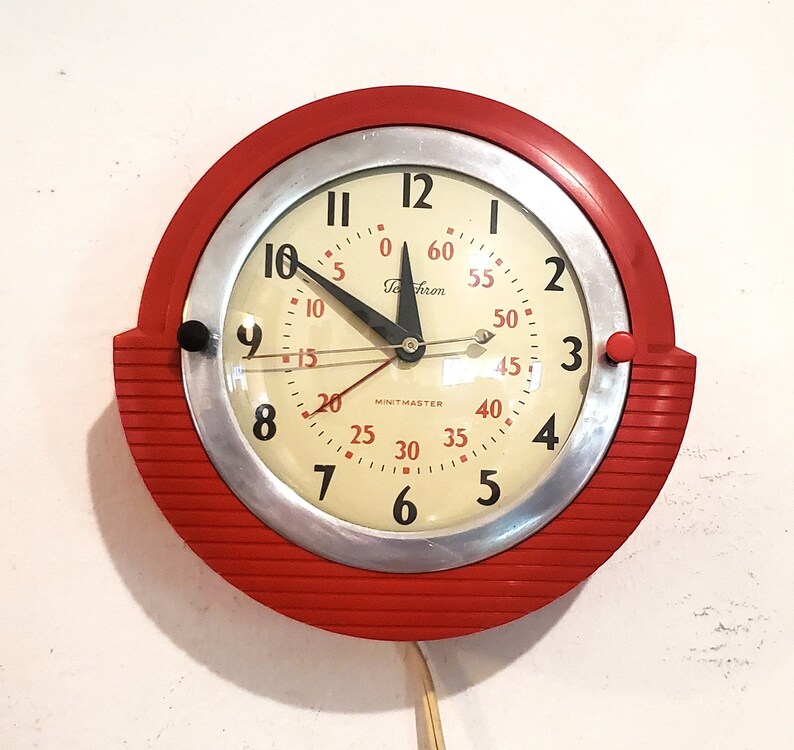
The Minitmaster, introduced in the 1950s, was a compact kitchen clock designed for small spaces. Its simple design made it an ideal addition to kitchens, where it could be mounted on walls or placed on counters. Powered by the Telechron synchronous motor, the Minitmaster provided dependable timekeeping in a small, convenient format. These clocks were extremely popular during the mid-century, reflecting the era’s emphasis on functionality in the home. The Minitmaster can be valued between $50 and $100, depending on condition.
Collectors today seek the Minitmaster for its vintage charm and practical design. While it was not as grand as some of Telechron’s larger models, it played a vital role in everyday life in mid-20th-century homes. Its popularity during the 1950s is a testament to the demand for reliable, compact clocks. Despite its modest size, the Minitmaster remains a well-loved piece for collectors of vintage electric clocks. Its simplicity and practicality make it a collectible item for those interested in mid-century timepieces.
Telechron 5H61 The Fort
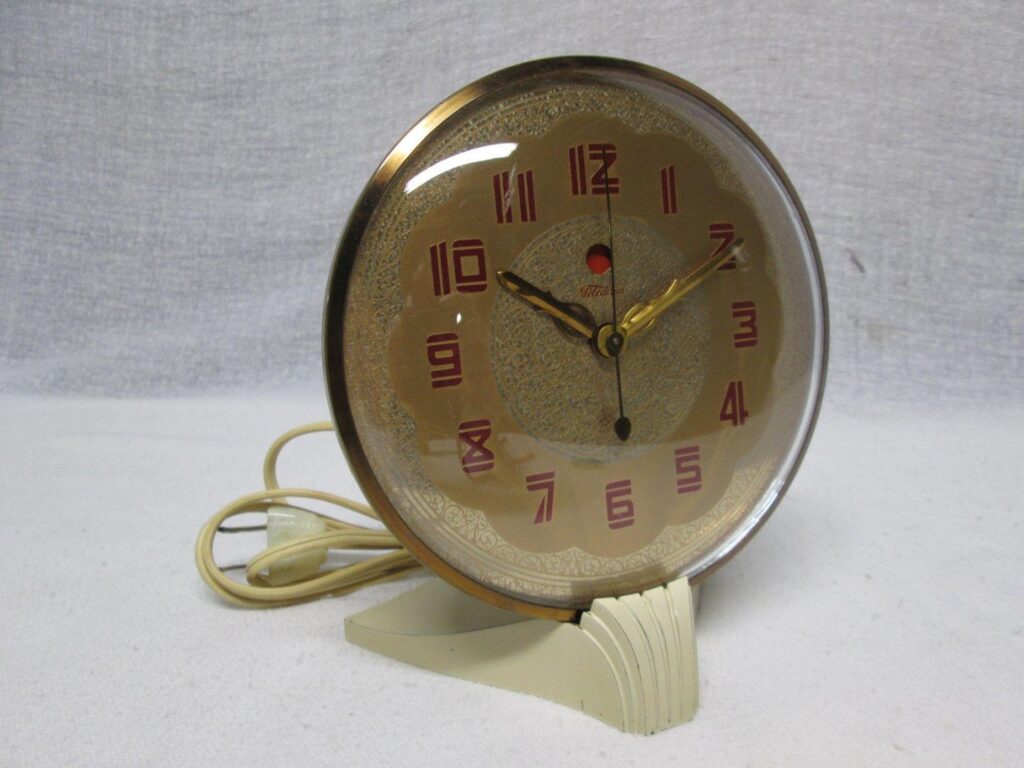
A variant of the original Fort, this model featured a slightly different case design but maintained the same robust construction. Released in the same period, it offered similar reliability but with subtle design variations that set it apart from its predecessor. The clock was designed for use in homes, blending with various home decor styles while providing accurate timekeeping. Like the original, this model was powered by a Telechron motor, which was a significant improvement over the mechanical wind-up clocks. It is typically valued at around $100 to $150 depending on condition.
The Fort model’s popularity was due to its practicality and clean design, making it a timeless piece in American homes during the early 1940s. As with the original, it remains highly collectible for those interested in vintage electric clocks. Its rarity is the result of its widespread use, meaning fewer examples have survived in pristine condition. Finding one in excellent shape is a challenge, making it highly desirable for collectors. While not as rare as other Telechron clocks, its value is still considerable for those who appreciate mid-century modern timepieces.
Telechron 6B17 Resolute
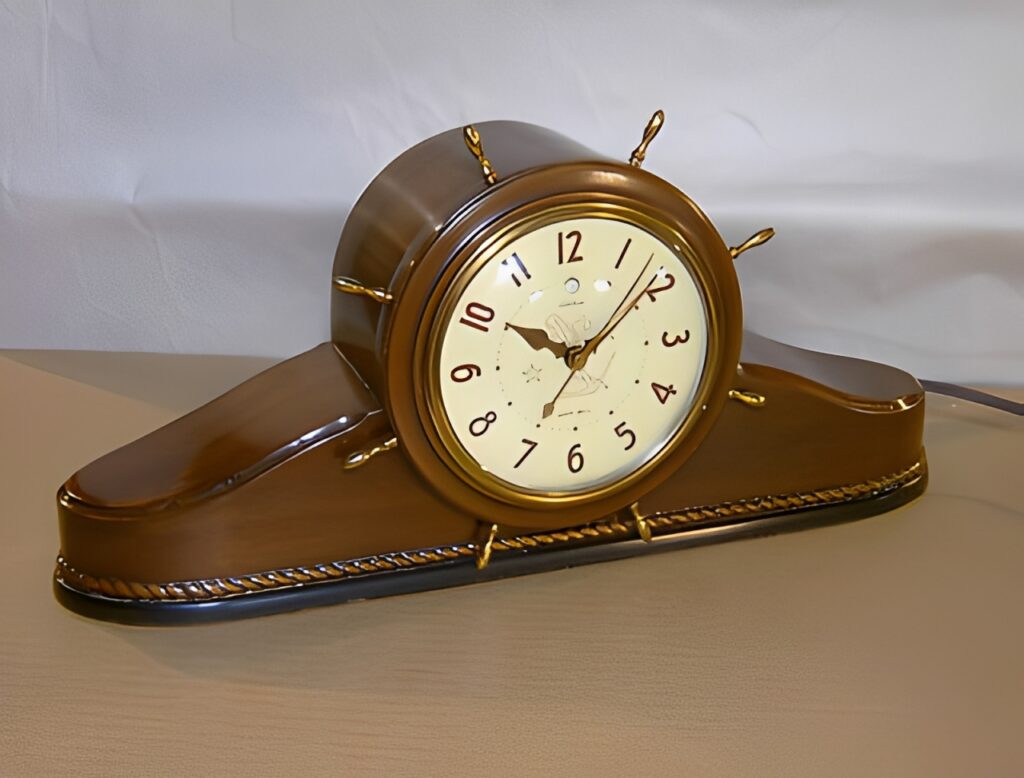
Introduced in 1947, the Resolute was a wall clock designed with nautical influences, featuring a rope-style detail around its edge. The clock’s design was eye-catching, making it an attractive piece for coastal or nautical-themed rooms. The use of the Telechron synchronous motor ensured that the clock kept accurate time, a key feature in the electric clocks of this era. In excellent condition, the Resolute can be valued between $150 and $250. Its unique design, combined with the historical significance of being part of the post-war electric revolution, makes it a collector’s item.
Collectors appreciate the Resolute for its distinctive nautical-themed design, a rarity in Telechron’s usual offerings. The clock’s strong construction and stylish appeal make it a standout piece, reflecting the technological optimism of the late 1940s. Despite being designed for a niche market, the Resolute has remained a popular item among those who admire vintage clocks with unique designs. The clock’s rarity and value are a direct result of its limited production and design influence. For those interested in maritime-themed timepieces, the Resolute is a must-have collectible.
Telechron 2H19 Iris
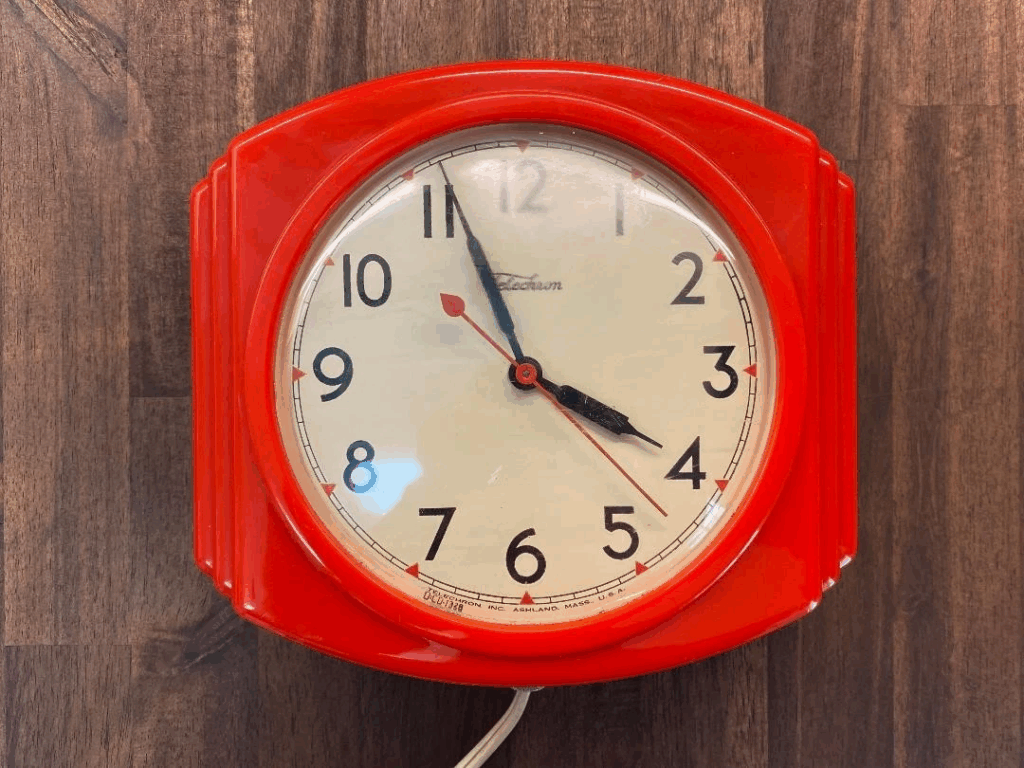
Released in the 1940s, the Iris was a wall clock known for its elegant design and reliable performance. Its Art Deco styling made it a popular choice for home interiors. The clock’s use of the Telechron synchronous motor ensured accurate timekeeping. In good condition, it can be valued between $75 and $125. The Iris remains a sought-after piece for collectors of vintage clocks.
The Iris clock was admired for its functional design and timeless look. The clean lines and art deco-inspired style gave it a place in many American homes during the 1940s. Its popularity can be attributed to its balanced design, which suited a variety of interior styles. Collectors appreciate the Iris for its historical significance and place in the evolution of electric clocks. This model is a great example of how Telechron blended modern technology with decorative appeal.
Telechron 3H156 Narcissus
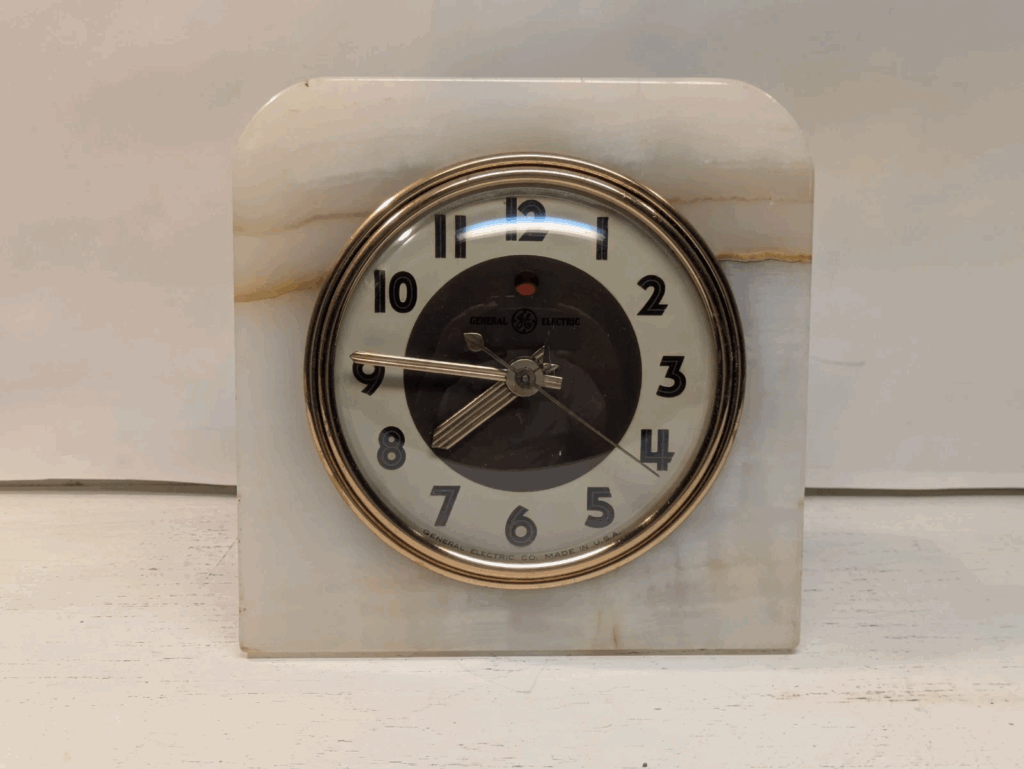
Released in the 1950s, the Narcissus was a wall clock known for its elegant design and reliable performance. Its mid-century modern styling made it a popular choice for home interiors. The clock’s use of the Telechron synchronous motor ensured accurate timekeeping. In good condition, it can be valued between $75 and $125. The Narcissus remains a sought-after piece for collectors of vintage clocks.
The Narcissus clock was admired for its functional design and reliable motor. Its clean lines and modern look made it a favorite in mid-century homes. The clock’s historical significance, combined with its practical use, has kept it relevant among collectors today. With its simple yet elegant design, the Narcissus continues to be a cherished item in the vintage clock market. Collectors appreciate it for its combination of beauty and reliability.
These timepieces remain a valuable part of clock history, offering both functionality and style. Collecting these clocks allows enthusiasts to connect with a pivotal moment in timekeeping technology.
This article originally appeared on Avocadu.
